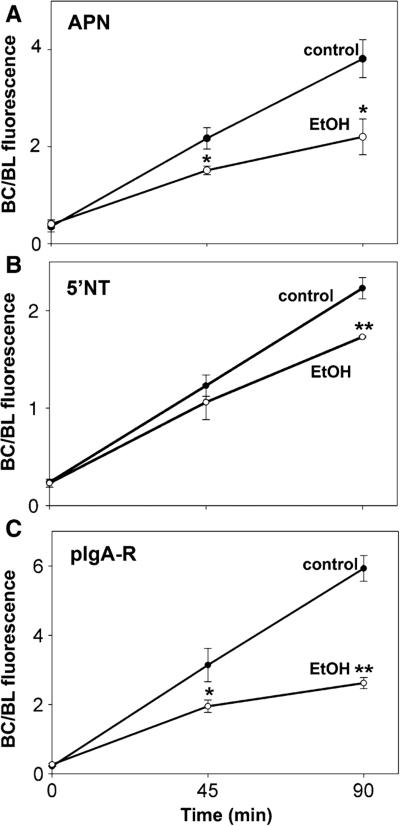Fig. 2.
Transcytosis of pIgA-R is impaired to the greatest extent in ethanol-treated cells. WIF-B cells were treated in the absence or presence of 50 mM ethanol (EtOH) for 72 h as indicated. Live cells were basolaterally labeled for the indicated canalicular proteins as described in Fig. 1 and chased for 0, 45, or 90 min at 37 °C in the continued absence or presence ethanol. Cells were fixed and permeabilized and labeled with secondary antibodies to detect the transcytosed proteins. Random fields were visualized by epifluorescence and digitized. From micrographs, the average pixel intensity of each marker at selected regions of interest placed at the bile canalicular or basolateral membrane of the same WIF-B cell was measured. The averaged background pixel intensity was subtracted from each value, and the ratio of bile canalicular (BC) to basolateral (BL) fluorescence intensity was determined. Values are expressed as the mean ± SEM for APN (A), 5′NT (B), and pIgA-R (C). Measurements were performed on at least three independent experiments. *p ≤ 0.05, **p ≤ 0.005

